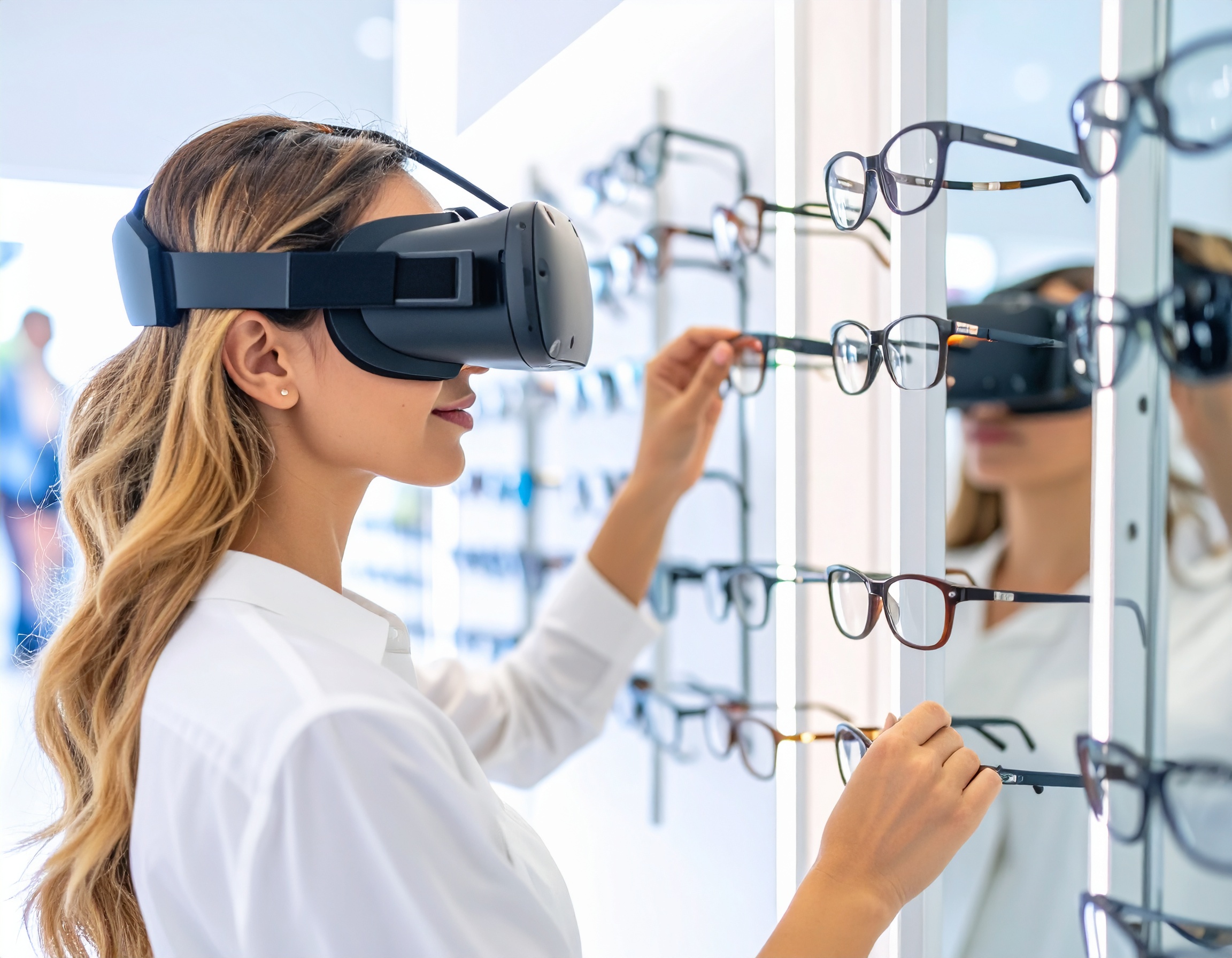Build a Virtual Glasses Try On Experience with AI and AR for Your Eyewear Brand
TL;DR:
Allowing customers to try glasses online is considered a basic and necessary feature now. This guide walks you through the process of implementing an AR Try On solution for your eyewear brand. We'll cover everything from 3D modeling your products to choosing the best virtual try on glasses software and measuring the significant impact on your sales and customer engagement.
Table of Contents
- Why Virtual Try-On is Now Table Stakes for Eyewear Brands
- Understanding the Technology Behind Virtual Try-On
- A Step-by-Step Guide to Implementing Your VTO Experience
- Choosing the Right Virtual Try-On Glasses Software
- Benefits of Implementing a Virtual Glasses Try-on Solution
- The Future of Eyewear E-commerce is Immersive
- Frequently Asked Questions (FAQs)
Why Virtual Try-On is a Necessity for Eyewear Brands
The main problem with selling glasses online is that customers cannot try them first.
People feel unsure about buying glasses without knowing how they will look.
Virtual Try-On (VTO) technology solves this problem.
By offering a virtual glasses try on experience, you enable customers to see how frames fit their face from the comfort of their home.
This technology is the key to reducing returns, boosting conversion rates, and building the confidence shoppers need to click "Add to Cart."
Understanding the Technology Behind Virtual Try-On
A virtual eyewear try-on feature uses both augmented reality (AR) and artificial intelligence (AI). The technology has a few main parts that work together.
- Device Camera: The camera on the user's computer or phone shows a live video of their face.
- AI-Powered Facial Mapping: The virtual try-on glasses software then uses AI to find the user's face. It can mark important points like the nose bridge and eyes very accurately.
- 3D Product Models: Your eyewear frames are stored as detailed 3D digital models.
- AR Overlay: After that, the AR technology places the 3D model of the glasses on the user's face in the video. The glasses stay fixed on the face even when the user moves their head. This gives a very realistic view.
A Step-by-Step Guide to Implementing Your VTO Experience
Ready to build your own AR Try On feature? Here's a practical roadmap to get you started.
Step 1: Create 3D Models of Your Eyewear Collection
Your physical frames need to be digitized. These 3D models are the foundation of your Virtual Try-On experience. You have two main options:
- Professional 3D Scanning: Work with a specialized agency to create high-fidelity 3D models from your physical products. This ensures maximum realism, capturing textures, colors, and materials accurately.
- Using CAD Files: If you have the original CAD (Computer-Aided Design) files from your manufacturing process, these can often be converted into web-ready 3D models. This can be a more cost-effective starting point.
Step 2: Choose the Right Virtual Try-On Glasses Software
You need a robust software platform to power your experience. You can either build a custom solution (which is resource-intensive) or partner with a specialized VTO provider.
A good provider will offer a solution that is easy to integrate, scalable, and provides accurate, realistic rendering. We'll cover key features to look for in the next section.
Step 3: Integrate the VTO Solution into Your E-commerce Platform
Whether you're on Shopify, Magento, WooCommerce, or a custom platform, your chosen virtual try on glasses software needs to integrate smoothly.
This typically involves adding a "Try On" button to your product pages. The integration process is usually handled with a few lines of code provided by your VTO partner, making it a relatively simple technical task.
Step 4: Promote Your New Feature
Once you can try glasses online at your store, promote it as a differentiator to drive traffic and sales:
- Update your homepage with a banner announcing the new feature.
- Launch an email marketing campaign to your customer list.
- Run social media ads showcasing the virtual glasses try on in action.
How to Choose the Right Virtual Try-On Glasses Software
When you are looking at different VTO companies, you should check for some important features. This will help you find the best virtual try-on glasses software.
- Realism and Accuracy: The AI glasses try-on should look true-to-life and fit the user's face accurately. Poor tracking or unrealistic rendering will break the experience.
- Cross-Device Compatibility: Ensure the solution works seamlessly across devices irrespective of the camera type.
- Ease of Integration: The provider should offer clear documentation and support for integrating with your specific e-commerce platform.
- Performance and Speed: The virtual eyewear try-on experience should load quickly and run smoothly to avoid user frustration.
Benefits of Implementing a Virtual Glasses Try-on Solution
- Increased Conversion Rates: Brands often see a significant lift in conversions on products with a VTO feature, as it removes a major purchase barrier.
- Reduced Return Rates: When customers have a better idea of how glasses will look and fit, they are less likely to return them. This has a direct positive impact on your bottom line.
- Higher Engagement: Virtual Try-On is an interactive and fun feature that keeps users on your site longer, increasing their engagement with your products and brand.
The Future of Eyewear E-commerce is Immersive
The primary friction point for online eyewear sales is the lack of a try-on option. It leads to cart abandonment, high return rates, and poor reviews.
Implementing an AR Try On solution helps you get rid of these issues and truly compete with offline channels.
Click here to explore how KiXR can help you implement an immersive virtual try-on solution.
FAQs
Can I try on eyeglasses virtually with perfect accuracy?
Yes, virtual eyewear try-on technology has become incredibly accurate. Using advanced AI and facial mapping, the best virtual try-on glasses software can provide a highly realistic preview of how frames will look and fit, including an accurate sense of scale on your face.
What is augmented reality try-on?
Augmented reality (AR) try-on is a technology that puts a 3D digital item on your real-world view using your camera. For glasses, the software sees your face and places a virtual pair on it. You can then move around and see how it looks from all angles.
How do I choose the best virtual try-on glasses software for my brand?
To get the best virtual try-on glasses software, you should look at a few things. Check how real the 3D models look and how well they fit on the face. The software should also work on all devices and be easy to add to your website. It is a good idea to ask a few companies for a demo to see their technology working.
Does Lenskart have virtual try on?
Yes, Lenskart has a virtual try-on feature. This is one of the primary reasons of their success, as it gave them the ability to directy compete with offline retailers of all sizes and segments.
Can you virtually try on Ray-Bans?
Yes, you can virtually try on Ray-Ban, both through their official site and numerous other retailers.
Kavita has been adept at execution across start-ups since 2004. At KiKsAR Technologies, focusing on creating real life like shopping experiences for apparel and wearable accessories using AI, AR and 3D modeling


